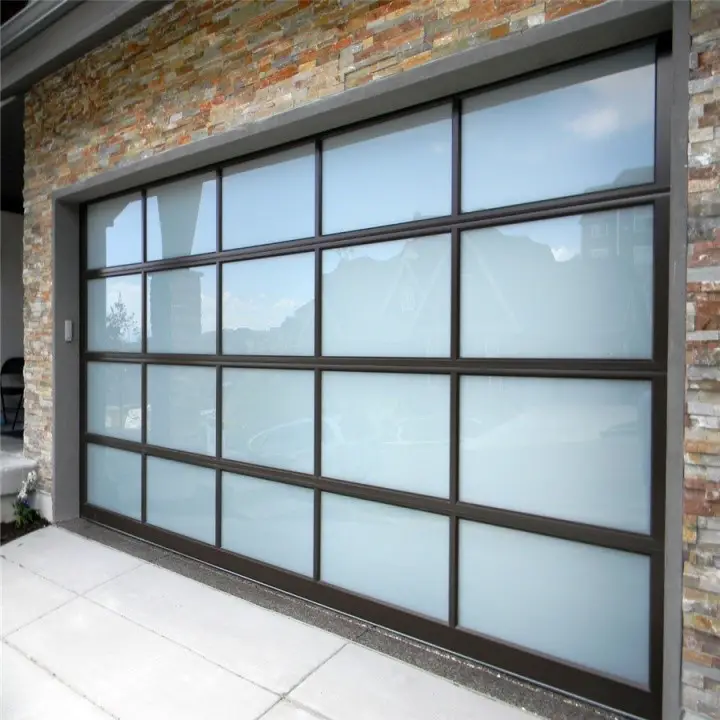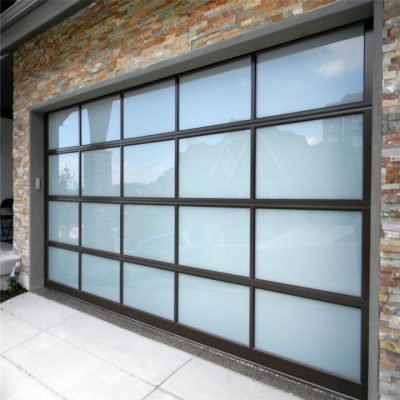Storm-Resistant Windows Advice, Home Facade Design Advice, Glass Property Guide, Architecture
Build Storm-Resistant Using Plexiglass for Windows
3 Sep 2019
Build Storm-Resistant Using Plexiglass for Windows that are Affordable
For years, traditional glass was the only glass used in windows, but now plexiglass has become the ideal material you want to adorn your windows and tables with. In addition to being cheaper than glass windows, it is also way more resistant and durable.
Plexiglass sheets are flexible, insulated clear acrylic sheets that can stand tall in any weather condition, be it a strong storm or hail. Yet, plexiglass acrylic glass is as transparent as regular glass that you do not even notice the glass sheets aren’t real glass. In fact, compared to regular glass, which loses its color if it’s too thick, clear plexiglass sheets allow 100 percent light to pass through no matter how thick it is.
If you are planning on replacing your regular windows with a storm-resistant plexiglass sheet, you are going to have to take certain precautionary steps. It isn’t an easy task by any means and would require you to go through a lot of trouble. Still, at the end of the day, you will have plexiglass panels made of cheap plexiglass.
Storm-Resistant Homes with Plexiglass Windows
- Measure the Outside of the Window
When you’re trying to fit in plexiglass acrylic sheets into already cut window frames, you need to be really careful with the measurements. If the plexiglass is too small, it will leave too much space on both sides of the frame. If the plexiglass cut is too large, it won’t fit the window frame.
In reality, space, where you have to fit in the glass, is a little bigger than what you can see. You need to take the dimensions of the area the glass is supposed to fit in, also referred to as a tight fit.
Around the frame of the window, you will find the glazing beading. Glazing beading is the wood or plastic that stays side by side with the glass to hold the window frame. You need to find the outer edges of this beading on all sides of the frame.
For you to get the horizontal tight fit dimensions, you need to measure the distance covered by the outer edges of the frame from top to bottom. Note down the measurements on a piece of paper.
Similarly, measure the vertical dimensions by checking the distance between the outer edges on both edges from left to right. Don’t forget to write down the measurements.
Now, from the dimensions you have recorded, remove 1⁄4 inch out of the way. The measurement you now get is what you should rely on to cut the plexiglass sheets. Usually, at least ⅛ inch is deducted from all sides of the dimensions so that ultimately, the glass turns out to be a little smaller than the frame.
This way, the frame can expand and contract without belting out any damage to the glass. Since the rule states that ⅛ inch should be removed from each side from the ultimate measurement of distance, a total of ¼ inch is removed.
- Choose the Right Thickness of Plexiglass
While thickness isn’t really a major factor you need to focus on while choosing plexiglass; the sheets usually come in thickness size of ⅛, ¼ or 3/16. Most homeowners settle for ⅛ or ¼ thickness, which is quite clear and allows plenty of light inside your room. However, if you want the glass to be a little thicker, you can opt for 3/16, which is more resistant. In general, all forms of plexiglass are appropriate for any bad weather.
- How to Cut Plexiglass Safely?
While plexiglass is actually easier to cut than regular clear glass or wood, it still requires utmost consideration and details with regard to safety before you start working on the plexiglass sheets.
While Plexiglass looks dull and soft, if they are cut recently, the edges can still be quite sharp. While you are trying to cut the plexiglass or shaping it, make sure to wear a good, sturdy pair of gloves. This can prevent your hands or fingers from getting nicked or even get a big enough cut to bleed.
When plexiglass is cut, it shatters into tiny shards of hard plastic and spreads around the area. If you are using a table saw to cut the glass, the bits and pieces of those shards could be flying around, and there is a real chance of them getting directly into your eyes.
Hence, it should come as no surprise that safety glasses are a must right from when you first bring out the plexiglass until you finish shaping it, so your eyes don’t get invaded by tiny pieces of shards.
Along with gloves and goggles, it might be a good idea to wear closed-toed boots as well. Those flying shards could very well fall on the ground you are walking on, and you don’t want a piece to pierce your foot. The more attention you pay to safety, the less you will have to worry about needing to visit the hospital later on.
Now, onto the actual task of cutting plexiglass. First, lay the plexiglass sheets out on a flat surface, preferably your work table, so you don’t have to bend over while working on it. Make use of a grease pencil to mark the areas that you want to cut. On the off chance, you end up cutting more than necessary, use a ruler or tape to measure the areas and to make sure you have it aligned straight.
Using the lines, you have drawn upon, with accurate precision, use a glass cutter to score the plexiglass five to ten times. Once you have scored it, move it along to the edge of the table. The last step is to apply a strong, downward force so that the plexiglass breaks along the scored area.
Sometimes, instead of cutting simple rectangular or square shapes, you might want to cut more complex shapes. At times the plexiglass sheets might be too thick. In such cases, you might want to rely on workshop tools like a saw to get you through the day.
For this, follow the same steps as above up to marking and measuring the plexiglass sheets. Then, hold the guide plate of the saw against the surface of the sheet while you line up the metal plate which is attached to the saw. Now, press the trigger and begin making your cut.
When you are first getting into it, do it at a slow and controlled speed. If you think the blade is somehow getting away from the straight line you have set on the plexiglass, slowly let go of the trigger. Now, place the blade over the marks again when you have gotten a better hold of the saw and are confident it will follow a straight line this time.
- Select Finishing of plexiglass
Once you have cut out the plexiglass, it is going to need some amount of smoothing and polishing before you can use it. To do so, first, you have to soak sandpaper in water for at least 15 minutes. It’s even better if you let it soak overnight.
Now, start the sanding process using a 120 grit sandpaper. Work your way up from the bottom of the grit level and watch as the edge of the plexiglass starts to get smoother than ever before. Keep going until you think it is time to use the 600 grit paper. This is the final bit of sanding the plexiglass is going to need. At the end of your labor, you will be left with the smoothest and polished edge you can imagine.
Now, get a drill that has a buffing attachment and a bit of polishing compound to your plexiglass. The last step is simple. Keep on buffing until you think the glass is shining as it should be. The end result should be clear plexiglass with curved edges so that no one gets hurt. Also, it should let in an ample amount of light.
- Insert and Set the Plexiglass in Frame
Get rid of the existing pane of glass so that you can replace it with the plexiglass sheet you have prepared. To do so, you might have to remove the glazing compound that surrounds the piece of glass currently, and you might even have to break the glass apart to make it possible.
Use a putty knife to get rid of the remaining glazing compound. Safely remove the glazing compound by scraping the area gently so as not to leave a mark.
If the plexiglass sheet has to be used to fill the exterior side of the window or door, you will need to prime the wood a little. Around the opening, apply the thinnest layer of glazing compound that you can afford. Now, align the plexiglass sheet with the glazing beading.
To make sure your alignment is perfect, use someone else to hold the plexiglass sheet along with you. Attach the glass to the glazing points. Around the window, apply another layer of glazing compound. At this point, don’t forget to roll it around a little so it’s warm and pliable in your hands. Now, place it on all sides of the window. Make use of a putty knife, so that it is pushed tightly against the frame and the window at exactly 45 degrees.
In case you are attaching plexiglass to a fresh frame, make sure to cut wood at a 45-degree angle around the opening of the frame. You can determine the size and style of the wood-based on what you like.
These wood pieces’ act as stops for the glass. Similar to the stops you find in picture frames, they are not only used to make it look more attractive but have the crucial purpose of upholding the glass.
The only difference between stops on picture frames and windows is that the one on the window has stops on both sides. This is because window plexiglass sheets are thicker and larger and need an ample amount of support.
If you want the plexiglass to be installed directly to the middle of the frame, carefully place stops at the opening. In case you want the plexiglass to be flushed with the opening, install the stops to where the glass is facing the frame. To attach those pieces, you can use a nail gun.
Once you have removed the protective layer found around plexiglass, just insert the glass where the stops are, and you will find they are aligned correctly. After cutting another 4 stops at a 45-degree angle, so that it will fit snugly with the plexiglass, simply remove the last protective layer on the plexiglass. Keep the wood attached with the help of a nail gun.
Where Can I Buy Plexiglass?
Now that you are fully equipped with the knowledge on how to give your home the storm-resistant plexiglass window it deserves, you might be wondering where can I buy Plexiglas?
Fear not, for we have companies who offer plexiglass sheets for sale like Fab Glass and Mirror, ready to deliver the best plexiglass sheets at your request. In case you still have some leftover confusion on what kind of plexiglass sheets would be suited for your window or the thickness that you are most comfortable with, you can even engage in a long conversation with the expert on the website.
The site offers you options on the shape, dimensions, glass type, thickness, and edging. In case you are not currently comfortable with the cut you have made for yourself, you can rely on them to measure your windows for you and offer you custom made plexiglass.
On this topic, one can’t ignore that plexiglass sheets aren’t only good for windows, but plexiglass table tops, shelves, and furnishings among other things. Such things could also use a touch of the precious glass sheets. If you want to buy from Fab Glass ad Mirror, all you need to do is leave your details on the website and one of their expert professionals will contact you. Or you could use the site to directly order your custom plexiglass components as well.
Building Articles
Image source for the three picture in this article: https://unsplash.com
Comments / photos for the Build Storm-Resistant Using Plexiglass for Windows page welcome



